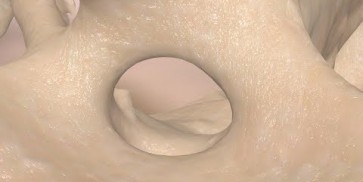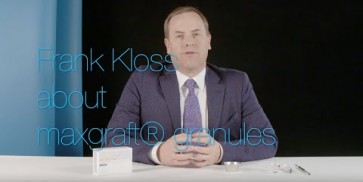
maxgraft® Granula
- Extraktionsalveole
- Kieferkammaugmentation
- Ossäre Defekte
- Intraossäre Defekte (1- bis 3-wandig)
- Sinuslift
|
- Erhaltene natürliche biomechanische Eigenschaften
- Steril, keine immunogene Abstoßungsreaktion
- Haltbarkeit 5 Jahre bei Zimmertemperatur
- Osteokonduktiv, das natürliche und kontrollierte Remodelling unterstützende Eigenschaften
maxgraft® spongiöse Granula | ||||
|---|---|---|---|---|
Art.-Nr. | Partikelgröße | Inhalt | ||
BO-30005 | < 2,0 mm | 1 x 0,5 ml | ||
BO-30010 | < 2,0 mm | 1 x 1,0 ml | ||
BO-30020 | < 2,0 mm | 1 x 2,0 ml | ||
BO-30040 | < 2,0 mm | 1 x 4,0 ml |
maxgraft® kortiko-spongiöse Granula | ||||
|---|---|---|---|---|
Art.-Nr. | Partikelgröße | Inhalt | ||
BO-31005 | < 2,0 mm | 1 x 0,5 ml | ||
BO-31010 | < 2,0 mm | 1 x 1,0 ml | ||
BO-31020 | < 2,0 mm | 1 x 2,0 ml | ||
BO-31040 | < 2,0 mm | 1 x 4,0 ml |

Für erfahrene Mund-Kiefer-Gesichtschirurgen ist allogener Knochen die einzige wahre Alternative zur autologen Knochenentnahme. Dadurch werden mögliche Komplikationen wie Entnahmestellenmorbidität, Infektionen, Knochenstabilitätsverlust und erhöhter postoperativer Schmerz vermieden. Das exzellente biologische Regenerationspotenzial von maxgraft® führt zu vorhersagbaren und zuverlässigen klinischen Ergebnissen.
Please find our free webinars at www.botiss-webinars.com
Kostenfreie Webinare zu Schulungszwecken finden Sie unter www.botiss-webinars.com
Please find our free webinars at www.botiss-webinars.com
Please find our free webinars at www.botiss-webinars.com
Please find our free webinars at www.botiss-webinars.com
Please find our free webinars at www.botiss-webinars.com
Please find our free webinars at www.botiss-webinars.com






















































